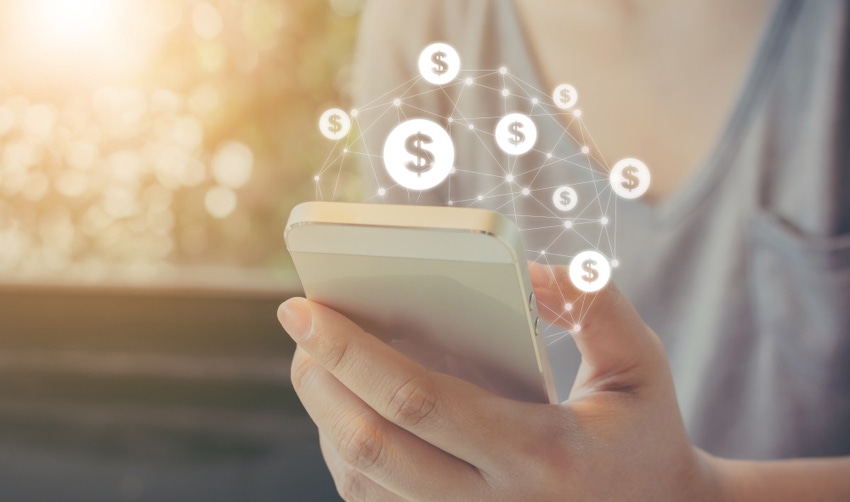The introduction of 5G, coupled with an increase in digital offerings and thirst for service innovation, has resulted in more complex product portfolios and forced a redefinition of telecom billing.
October 5, 2020

Telecoms.com periodically invites expert third parties to share their views on the industry’s most pressing issues. In this pieceAbhijeet Vivek Ingale, Tecnotree Solutions Consultant, looks at the trends defining today’s billing environment.
For the past decade, telco services were relatively easy to manage and simple to bill. However, the introduction of 5G, coupled with an increase in digital offerings and thirst for service innovation, has resulted in more complex product portfolios and forced a redefinition of telecom billing.
To maintain competitiveness in this new environment, different CSPs (Communication Service Providers) have adopted different strategies and business models. This has led to a diversification of services and overall improved customer experience, including different pricing structures and, crucially, billing.
Whether it is retail billing, enterprise billing, interconnect billing, roaming billing, split billing, MVNO/MVNE billing, carrier billing, convergent billing, e-billing, video billing or any other, it is one of the key factors behind CSPs delivering better customer experiences, whilst also expanding their range of offered services and focusing on core operational excellence.
But what are the actual agents of this change?
Policy Management
With the advent of 5G, it soon became clear that billing had to adapt to the policy and QoS-based real-time charging of non/telco events. While some CSPs have acted as disruptors in 5G by charging customers based on QoS (Network slice – embb, uRLLC, mMTC), many others are still charging and billing customers based on traditional product/plan-based charging. Network slicing comes with the benefit of enabling operators to build private cellular networks for large enterprise or alternatively, utilise it for dedicated applications. As the architecture around 5G supports spending limit control functionality, allowing customers to monitor and consume within their specified limits, charging systems must respond by reacting in real-time more than ever.
IoT & M2M
IoT and M2M is one of the key emerging areas in this space, driven by the specific needs of different industry verticals such as healthcare, smart cities, transportation, hospitality, finance, retail, manufacturing etc.
With millions of new devices getting connected regularly and even more transactions happening every second, one of the challenges faced by CSPs is billing these different verticals. In order to handle the complexity and scale of these functions, a charging system has to be flexible enough to implement the ad hoc changes which can be achieved with configurable business rules. With businesses demanding personalised products, IoT and M2M are increasingly important in powering an industry agnostic charging system that can charge telco/non-telco events, yet be flexible enough to bill all types of customers and generate invoices in whatever format and currency the customer needs.
Diversification & New Business Models
In today’s digital age, where food can be ordered online & delivered within minutes, instant gratification is the expectation, not a surprise. This is reflected in the changing telecom sector, with customers also expecting real-time and instant billing, but the real change has come from the areas driving this expectation.
From online gaming, where the Pay as You Go (PAYG) business model reigns supreme to the growth of different entertainment and mobile payment services, diversification is on rise. In order to support such variety, billing and charging systems must evolve and it will require the tight integration of these platforms with the new systems. Supporting these new “on-the-go” demands will be a real catalyst for change and CSPs have already started to take a leap forward by diversifying payments, content services and more.
Partnerships
Platform-based digital services can extend the benefits and value to end consumers by enriching a CSPs core value chain. This may mean partnering with different industry verticals
The charging and billing of partner services is complex. While retail billing should be upscaled and transformed to bill non-telco and digital events, the direct or cascading of partner settlements is another element of billing that has emerged as part of the partnering model. To minimise disputes between the telco and their partners, the partner settlement solution requires real-time capabilities and automation of core billing processes such as reconciliation on the go.
API monetisation is the key area which will help CSPs drive their revenue with different business models. While doing so, the CSP API ecosystem is exposed and monetised, as per consumption, and it will need to be tracked accurately in billing systems.
Cloud based Convergent Billing & Charging
Digital transformation has changed convergent billing and charging; switching it from a basic calculation to one that is based on real-time data and personalised for the individual customer. This has been achieved by CSPs now having the ability to segment usage data so that they can create targeted offers and products for different groups in their network. In addition, billing as-a-service has and will continue to become more appealing as CSPs seek to retain control of billing and charging, while also reducing both OPEX and CAPEX. Delivery approaches will also evolve, mainly around private cloud and multi-tenancy.
AI/ML Techniques
Like many other industries, the telecom sector has embraced the advantages provided by artificial intelligence (AI) and machine learning (ML). For CSPs, these solutions have become the catalyst in pushing forward with automation, especially around zero touch operations for the bill run process. They can also assist billing systems in understanding the data sets used in bill runs via ML models that not only automate the process but also manage pre and post bill checks. The benefits of this are not only internal increases in operational efficiency, but also an improved external customer experience offering via timely and accurate bills.
Wallet transaction data is another benefit being provided by ML. For customers, it provides them with insights into their spending and savings by category and allows them to buy more intelligently going forward. For CSPs, these insights can be used to upsell or cross sell relevant products and services suiting customer needs. ML models can provide these insights by building their frameworks around key areas such as customer spend, savings, areas of improvements, preferred payment, balance mode and more.
Change is the only constant in the telco industry and there is more to come. With 5G, IoT/M2M, cross-domain offerings and new business models, CSPs have a lot of opportunities to monetise multiple revenue streams for all segments (B2C, B2B, B2B2 etc.), ultimately re-defining and developing their current billing & charging solution.
 Abhijeet is a Solution Consultant at Tecnotree with a diversified background in the telecoms industry. He is an electronics and telecommunications engineer and his areas of interest are BSS, cloud computing, IoT and many others. He is also a passionate telecoms writer and is currently studying for a Post Graduate Diploma in Telecom Management.
Abhijeet is a Solution Consultant at Tecnotree with a diversified background in the telecoms industry. He is an electronics and telecommunications engineer and his areas of interest are BSS, cloud computing, IoT and many others. He is also a passionate telecoms writer and is currently studying for a Post Graduate Diploma in Telecom Management.
Read more about:
DiscussionAbout the Author(s)
You May Also Like








.png?width=300&auto=webp&quality=80&disable=upscale)


_1.jpg?width=300&auto=webp&quality=80&disable=upscale)


.png?width=800&auto=webp&quality=80&disable=upscale)